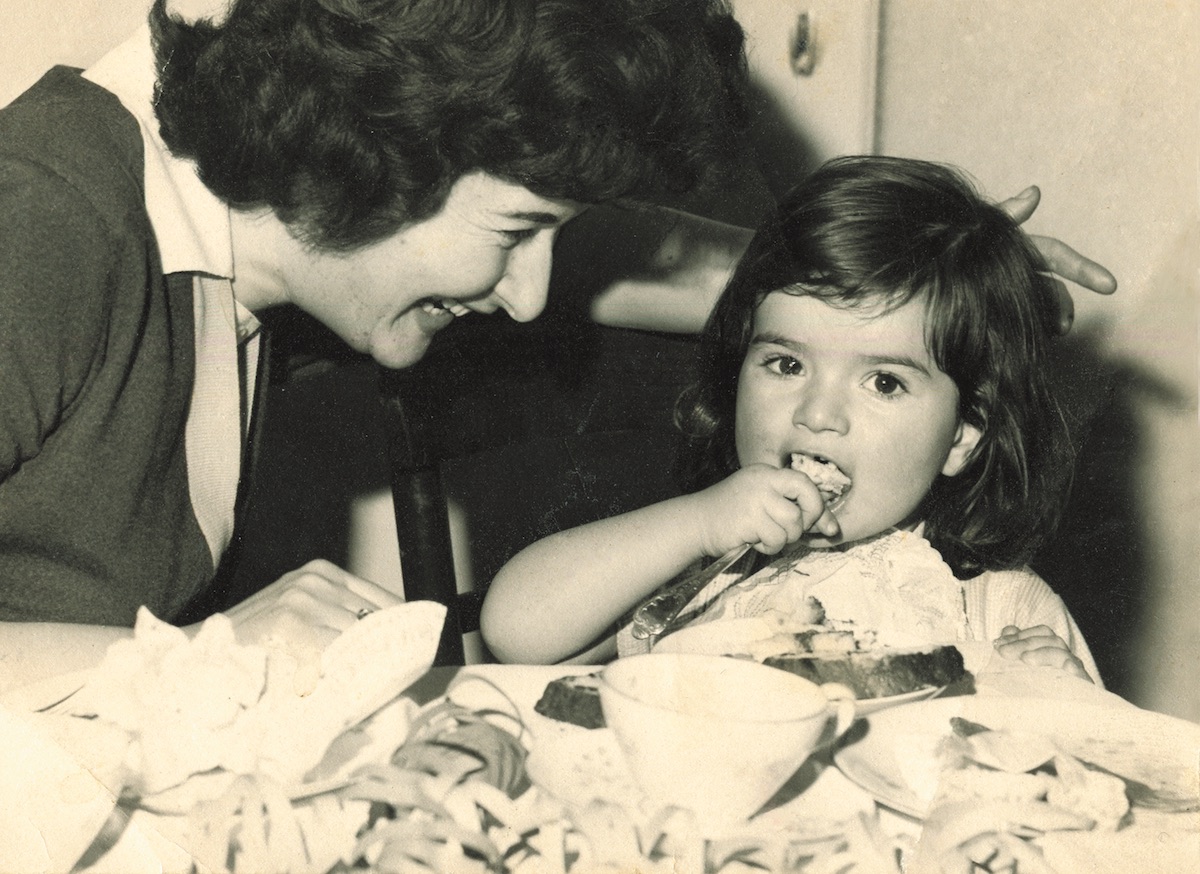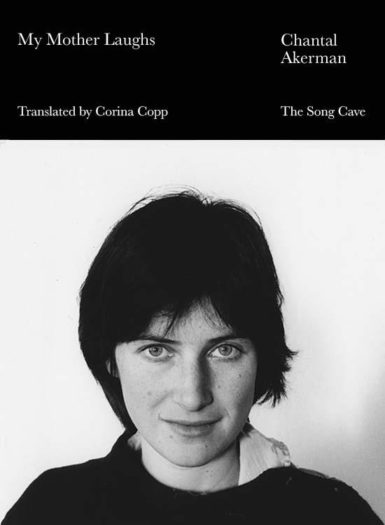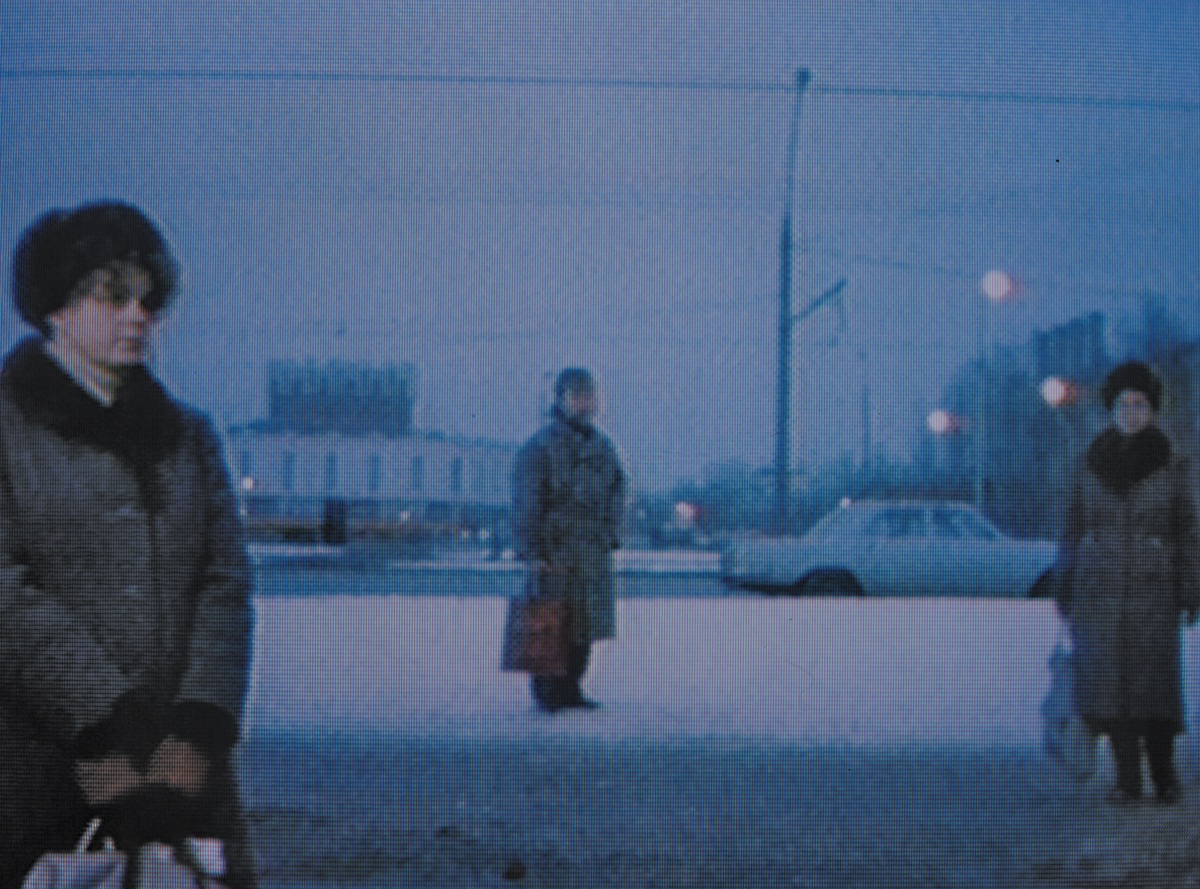[ad_1]

Chantal Akerman (right) with her mother (left).
COURTESY THE SONG CAVE
Chantal Akerman’s films and videos had a habit of dealing with the daunting subject of death not through visions of people expiring but instead through stark images of emptiness and sparsity. In her 1999 documentary South, Akerman pondered the killing of an African-American man in Texas by letting her camera linger over the road where he was dragged to his death by racist attackers behind a truck. Never once do we see a body, yet the image—unaestheticized, understated, raw—is disturbing for its profound sense of absence. Sometimes, in the right context, carnage and loss can be communicated through a six-minute shot of a winding country road.
I thought often of South while reading Akerman’s My Mother Laughs, a memoir in the form of a poetic musing on the inevitability of death and the difficulty of letting loved ones go. The filmmaker’s final piece of writing—first published in France in 2013, two years before her death, and shortlisted for the Prix Goncourt, the country’s highest award for literature—is a meditation on trying to hold tight to a presence that is slipping away. In Akerman’s case, that presence was her mother Nelly, who, due to a terminal illness, declines in health gradually over the course of a non-linear remembrance in which the author reckons with an unavoidable fate.

THE SONG CAVE
Nelly was the subject of two of Akerman’s best works: her 1977 film News from Home (in which Akerman reads her mother’s letters in voiceover) and 2015’s No Home Movie (which features footage of Akerman conversing with her mom during her final months). Both films are tender, serene, and slow in ways similar to My Mother Laughs, but the book is more emotional thanks to Akerman’s tender—if occasionally clinical—way of recounting her mother’s weakening physical state through in-depth descriptions of hospital trips, caretaking, and home visits.
Akerman’s writing is decidedly unflowery and terse, detached and even steely, in clipped sentences and lines that drop commas and other kinds of punctuation. She favors small words to evoke big feelings. To wit, from a section drawing on one of Akerman’s many trips to see her mother: “I bought some flowers for my mother. It’s so gray out. / Perhaps with the flowers we’ll feel it less. / We try. It’s not going very well.” Akerman “always considered herself a writer,” according to an afterword written by translator Corina Copp in the new version of the book released by the Brooklyn-based publisher Song Cave—and it shows in strange poetry derived from the odd, awkward, and sometimes confusing phrases that are often more illuminating than they might appear.
Threaded through memories of Nelly are aspects of Akerman’s own past. For the whole book, it’s clear that she’s closer with Nelly than she was with her father, but only once, in an especially memorable passage, does she touch on why. Akerman ascribes her differences with her father to his suggestion that she herself was of “another gender” than the women around her. Those well-acquainted with Akerman may recognize the true meaning of her words—in her films, she used her gender to explore female sexuality and, sometimes, her identity as a lesbian. (One of her first feature-length works, 1974’s Je Tu Il Elle, is a watershed work of queer cinema for its explicit—and, for its time, largely unprecedented—depiction of a relationship between two women.) “There had been other girls of another gender and that was that,” Akerman writes. “And we loved each other, that’s it.”

Chantal Akerman, D’Est (still), 1993.
COURTESY THE SONG CAVE
Indeed, that is pretty much it. Even though the book hints at the opposition she faced for her sexuality (“It made him unhappy,” she writes of her father), the text never again touches on the subject. But a lot of My Mother Laughs does focus on a former female partner referred to only as C. Akerman meets C. through Facebook, and the two go on to move in together in New York. For the most part, C. comes across as detached, unwilling to help Akerman deal with her mother’s ailing health. “C. knew about mothers dying,” Akerman writes. “But when pressed for details, she said no comment.”
In one of the book’s most wrenching passages, Akerman details how C. began physically abusing her. Akerman describes fighting back but remaining unable to “imagine what I should have done, or could have.” She describes herself as a victim, and she sees a pattern playing out across several generations of family—first with her mother, a Holocaust survivor, and then with herself and other female relatives. She writes of a visit to a supermarket with C. during which they purchased sugar cubes of a kind that Akerman liked to place between her teeth when drinking coffee, to sweeten the bitterness. “I think my three aunts had to do it in their time as well,” Akerman writes. For her, grief and trauma play out again and again, across continents and centuries.
That sugar cubes show up in one of the book’s darkest segments may not be incidental. There is sweetness amid the sadness in My Mother Laughs, but the sweetness is fleeting—and the sadness more permanent. That there are good moments that can coexist with bad ones seems to perplex Akerman. “I was living again,” she writes of a time with C. when she was briefly able to set her sights on something other than her ailing mother. Two sentences later, she puts a finer point on it: “I stopped not living.”
[ad_2]
Source link

